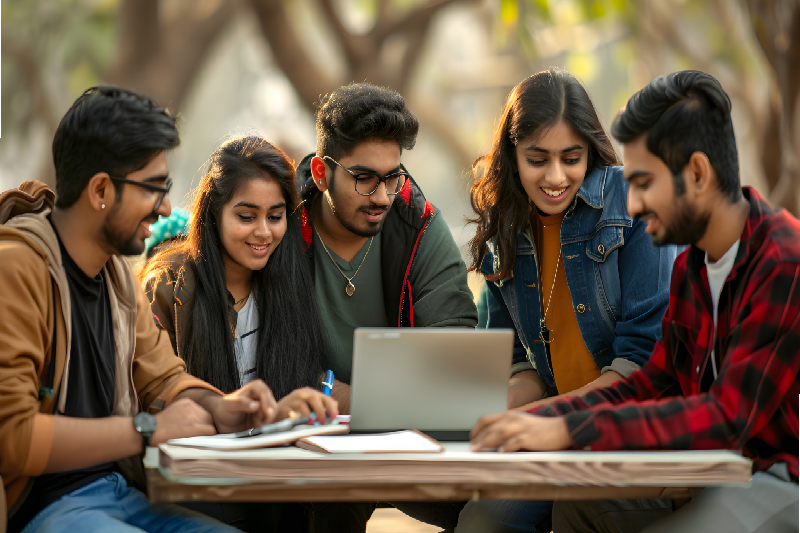
Maharashtra Hikes Allowances for 58,700 Tribal Hostel Students: A Major Boost for Educational Access
Empowering Tribal Students Through Policy Reform
In a landmark move aimed at strengthening educational support for tribal students, the Maharashtra state cabinet has approved a substantial hike in food, educational, and subsistence allowances for students residing in Tribal Development Department-run hostels. This reform, which ranges between 40% and 100% increase in benefits, is set to impact over 58,700 tribal students across 490 hostels in the state. The decision reflects a targeted effort to ensure tribal youth receive the necessary support to pursue higher education amid rising living costs.
Who Benefits: Reach and Scale of the Scheme
The Tribal Development Department of Maharashtra currently manages 490 hostels, including 284 boys’ hostels and 206 girls’ hostels, accommodating approximately 58,700 students from tribal communities. These hostels serve as critical residential and academic support centers for students pursuing education from tehsil-level rural institutions to divisional-level colleges.
The revision of allowances, approved by the cabinet on June 24, 2025, is expected to provide both financial relief and educational motivation, especially for students from marginalized and remote tribal areas.
Why the Hike? Inflation and Realignment with Economic Needs
The Maharashtra government has cited the rising cost of living and inflationary pressures as key reasons behind this revision. The last few years have seen significant economic changes, and the earlier allowance structure had become insufficient to meet the basic academic and nutritional needs of hostel residents.
The new rates are calibrated to align with the current inflation index, ensuring that tribal students have a fair chance at sustained learning and well-being without financial strain.
Revised Allowances: What’s New and by How Much
Monthly Subsistence Allowance
- Tehsil-Level Hostels (Rural Areas):
- Increased from ₹500 to ₹1,000
- Increased from ₹500 to ₹1,000
- District-Level Hostels:
- Increased from ₹600 to ₹1,300
- Increased from ₹600 to ₹1,300
- Divisional-Level Hostels:
- Increased from ₹800 to ₹1,400
- Increased from ₹800 to ₹1,400
In addition to the standard subsistence support, girls will now receive ₹150, up from the previous ₹100—a step toward promoting gender equity in higher education support systems.
Annual Educational Material Purchase Allowance
This allowance helps students buy books, stationery, and other learning resources. The revised structure includes:
- Classes 8 to 10:
- Increased from ₹3,200 to ₹4,500
- Increased from ₹3,200 to ₹4,500
- Junior College & Diploma Students:
- Increased from ₹4,000 to ₹5,000
- Increased from ₹4,000 to ₹5,000
- Undergraduate Degree Students:
- Increased from ₹4,500 to ₹5,700
- Increased from ₹4,500 to ₹5,700
- Medical and Engineering Students:
- Increased from ₹6,000 to ₹8,000
- Increased from ₹6,000 to ₹8,000
These adjustments aim to bridge the gap between basic schooling needs and specialized course requirements, ensuring that tribal students pursuing professional streams are not left behind.
Monthly Food Allowance
Food security remains a critical pillar of residential education. The revised food allowances are as follows:
- Hostels in Municipal Corporations & Divisional Cities:
- Increased from ₹3,500 to ₹5,000
- Increased from ₹3,500 to ₹5,000
- District-Level Hostels:
- Increased from ₹3,000 to ₹4,500
- Increased from ₹3,000 to ₹4,500
This revision ensures that all students, regardless of their geographical location, have access to nutritious meals that support their academic focus and physical health.
Fiscal Implications: A Bold Investment in Tribal Futures
The decision to revise these allowances will place an additional financial burden of ₹83.66 crore on the state exchequer. Previously, the government spent around ₹144.74 crore annually on these schemes. With the new allowances in place, the expenditure will now rise to approximately ₹228.41 crore per annum.
While this marks a significant increase, the government has expressed its commitment to inclusive educational development and recognizes this as a necessary investment to empower marginalized communities.
Significance of the Move: Beyond Numbers
The revised allowance policy is more than just a financial upgrade—it’s a step toward social equity, access to quality education, and empowerment of tribal communities. With financial barriers often being the largest deterrent for tribal students, especially girls, this decision has the potential to:
- Reduce dropout rates
- Encourage higher education enrollment
- Support professional aspirations in engineering, medicine, and allied fields
- Strengthen nutritional health, aiding cognitive and physical development
This policy also resonates with the objectives of the National Education Policy (NEP) 2020, which emphasizes equitable access to education for all, especially underrepresented groups.
Stakeholder Response: A Welcomed Reform
Early responses from tribal welfare organizations, educational institutions, and hostel coordinators across Maharashtra have been largely positive. Stakeholders view this as a long-overdue correction that acknowledges the real-world costs of pursuing education in today's socio-economic landscape.
Students and parents, particularly from rural tribal belts, have expressed hope that this support will reduce dependence on part-time work, allowing students to focus fully on their academics.
Looking Ahead: Monitoring and Implementation
With the new allowances set to roll out, the Tribal Development Department is expected to coordinate closely with district administrations to ensure timely and transparent disbursement of funds. Mechanisms for feedback and redressal are also anticipated to be strengthened to avoid delays and ensure that the benefits reach the intended beneficiaries without bureaucratic hurdles.
Conclusion: A Progressive Step for Inclusive Education
The Maharashtra government’s decision to hike allowances for over 58,000 tribal students represents a transformative policy action in the realm of inclusive education. By addressing critical gaps in subsistence, learning materials, and nutrition, the state is not only making education accessible—but also dignified and empowering—for its tribal youth.
In a country where educational equity remains a work in progress, this initiative offers a scalable model for other states to emulate, ensuring that no child is left behind due to financial constraints.



